ANCIENT
GLASS BEADS
Glass beads are not in my field of expertise.
However I would
like to display the few ones I have.
Multi colored glass beads
|
The beads in
my collection
are now for sale
Inquire
through bead ID
for price
|
|
|
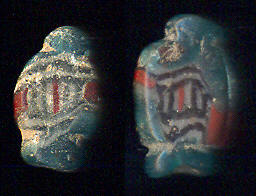
GLB 1 - 12 * 8 * 4 mm -
14 * 9 * 4 mm
Kaushambi -
Allahabad UP -
NOT FOR
SALE

|
The illustration is taken from the book:
"Indian Beads" - A Cultural and Technological Study - Shantaram B. Deo
p. 143
It shows beads excavated from Kausambi, Uttar Pradesh, Early historic
period.
Note the similarity between the two beads on my scan and the bead
displayed
in the low right corner of the photo from the book.
Ancient blue glass beads |
|
|
|
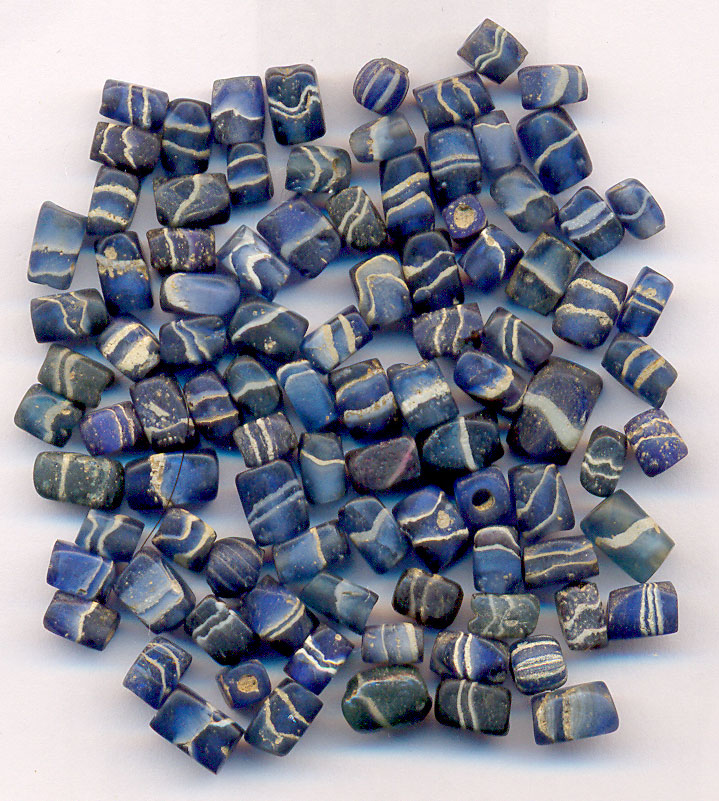
GLB 2 -
Average size: 6 * 3,5 mm
- SOLD
Click on picture for larger image
|
Wonderful deep blue colored glassbeads with stripes.
Greater India - probably Maurian Period 300
B.C. - 100 A.D.
Note the similarity between these wonderful beads and the bead displayed
in the low
left corner of the illustration from the previous mentioned book "Indian
Beads".
A bead expert told me with absolute certainty that the beads
displayed below
with the red dot in the middle were from the Islamic Period 800 - 900 AD.
|
|
|
|
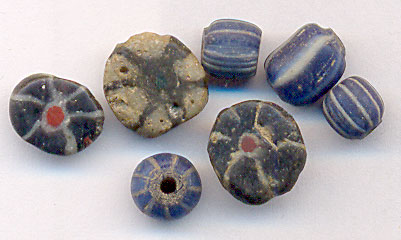
GLB 3
-
Disk beads: 9 * 2 mm
Eyebeads from the early classical
period
|
However - as you can observe in the
illustration below from "Indian Beads" (p.142)
an identical bead (no 3 in the upper row) was excavated in
Kausambi
(and Rajghat) from sites belonging to the Early historic period.
|
|
|
|
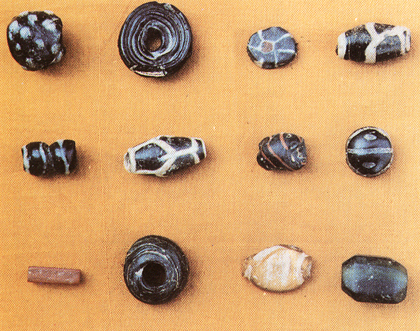
|
The differing perspectives
on the origins of the beads highlighted in this
discussion serve to underscore the inherent uncertainty
that frequently surrounds ancient artifacts. Questions
persist about their origin, authenticity, and potential
duplication. An intriguing example of such debate can be
found on
beadcollector.net
, where an engaging
discussion revolves around the small blue glass beads
adorned with white stripes.
In this discourse, the participants exercise a level of
'humility', recognizing that none possess absolute
certainty or definitive knowledge about these beads. As
an outsider and self-proclaimed non-specialist in beads,
I have often been taken aback by the sheer conviction
with which some bead experts stake their claim to the
truth.
The difficulty often arises from the inherent human
tendency to desire resolution and clarity. The unknown
can be unsettling and admitting that we simply don't
know can sometimes be challenging. Yet, there is an
undeniable allure to these unanswered questions. What
could be more captivating than a mystery bead? Each
unanswered question, each unknown facet, adds another
layer to the allure, transforming these objects into
captivating puzzles, waiting to unfold their secrets. In
the end, the quest for knowledge and understanding is a
journey, not a destination, and in this journey lies the
beauty of discovery.
Ancient white, green and red striped glass
beads
|
|
|
|
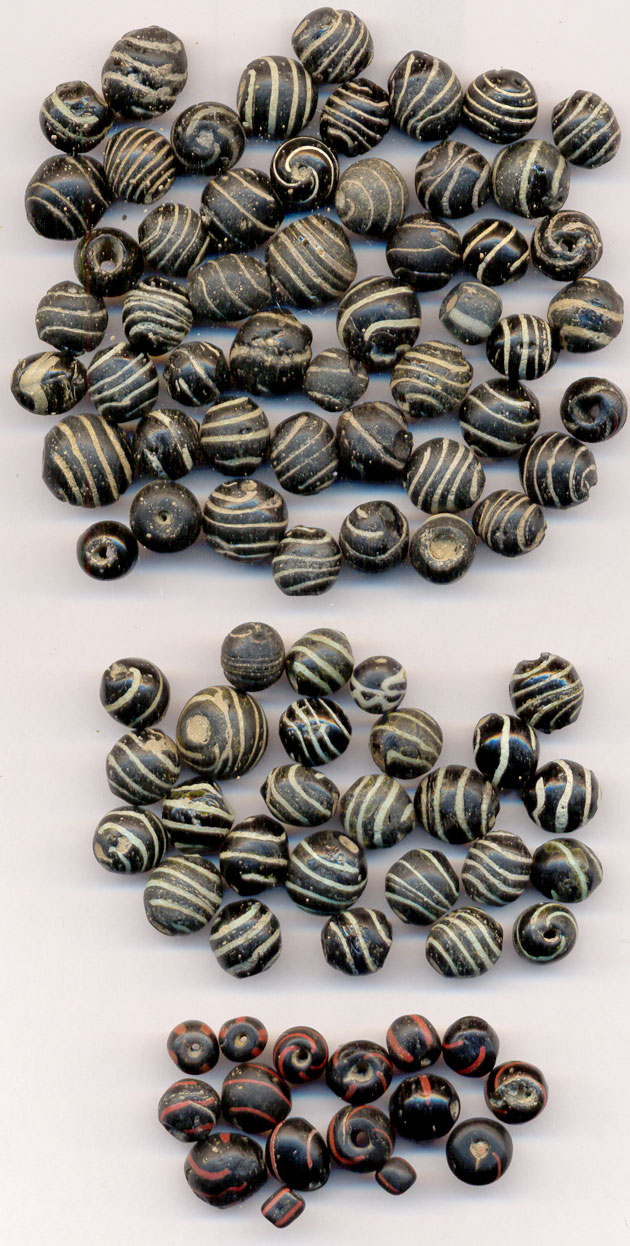
GLB 4
-
Average size: 10 mm
Banded glass beads
Largest piece: 12 mm - smallest piece: 8
mm
Early historic period - most probably
Maurian - 300 B.C. - 100 A.D.
|
|
The ancient glass beads displayed above were made before
the days of mass production. They
vary greatly in terms of size, shape, art and color.
Each one of them has a 'soul' of their own.
Note that you can find the quite rare beads with the red stripes on the above
illustration
from the Indian Bead book. (third in the middle row)
Ancient black glass beads
|
|
|
|
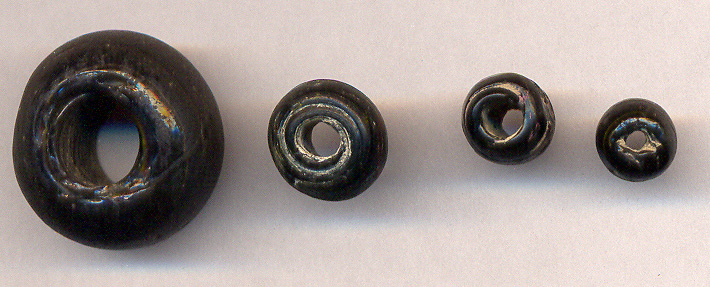
GLB 5
-
Note the similarity to beads in the illustration
from Indian Beads
| |
10 * 8 mm |
12 * 8 mm |
11 * 6 mm |
10 * 5 mm |
|
|
|
Ancient colored striped glass beads
|
|
|
|

GLB 6 -
| |
15 * 8 mm |
15 * 8
mm |
17 * 7
mm |
|
|
Colored glass beads from the
Early Historic period B.C.
|
|
|
|

11 * 4 mm
9 * 5 mm
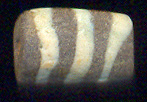
9 * 6 * 3 mm
GLB
7 -
|
|
|
These Pyu glass beads are made in resemblance of the typical Burmese jade.
|
|
|
|
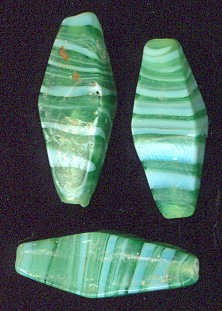
Click on picture for larger image
16 * 5,5 mm
GLB 9
-
|
|
|
|
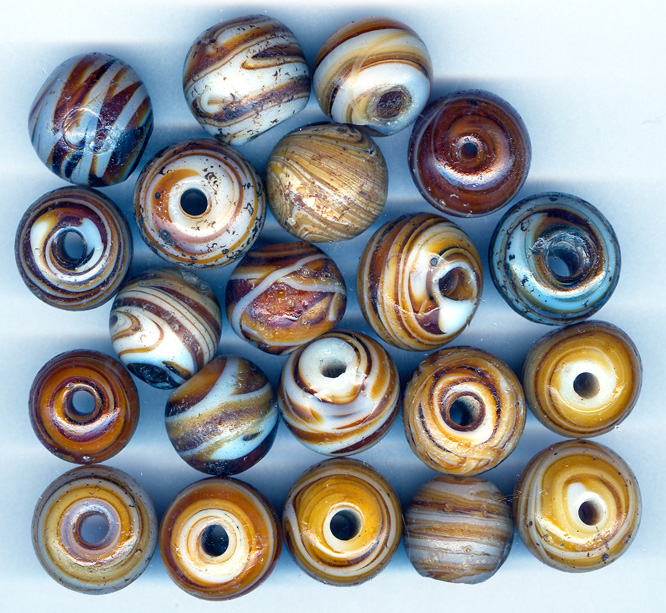
GLB 10 - Average 16 mm
|
|
|
|
|
|
|
|
|
|
|